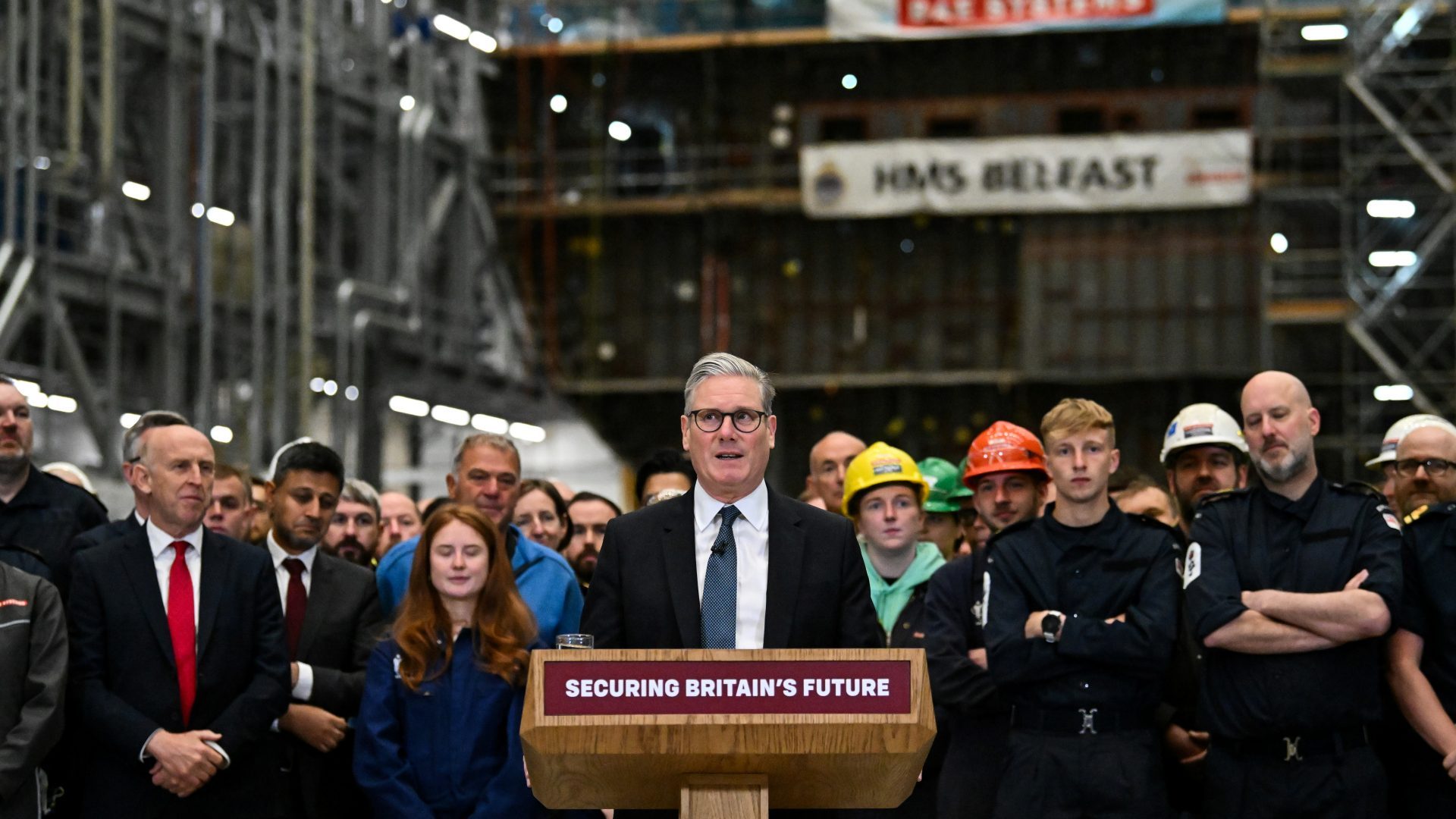If every member of Nato honours the plan to commit 5% of GDP to defence, including 1.5% to be spent on strengthening their critical infrastructure against attack, that’s an extra $1.7tn a year. Nobody in their right mind wants to spend more on defence than necessary, but as we do so, it’s vital that we make maximum impact to the UK economy in the process.
In September, the government faces two big choices that could shape whether that will happen. The first concerns conditions to be imposed on foreign defence firms when they are awarded contracts by the Ministry of Defence.
Labour in opposition called for the MoD to “build in Britain” – allocating contracts to firms operating onshore by preference – and slammed the award of the contract to build two supply ships to the Spanish firm Navantia. In the upcoming Defence Industrial Strategy (which I worked on while Labour was in opposition), the government needs to turn this objective into a clear rule-set.
But it won’t be easy: after years of under-investment, the UK defence industry is dominated by one big player – BAE Systems – and its shipbuilding rival Babcock. There are world-class aerospace and armoured vehicle factories, and a thriving ecosystem of SMEs, but much of the industrial capacity needed to arm the UK military is located in Europe, South Korea and the USA, as is the intellectual property.
As a result, one proposal the government is considering is to impose formal “inward investment” conditions on foreign defence firms. Known as “offsetting”, it is practised by 53 countries and works like this: if, say, a South Korean firm wins a contract to supply howitzers to the British army, and cannot base a significant amount of the manufacturing and R&D here, it would be mandated to create economic value in the UK to an agreed amount – say 70% of the contract value – over the next 10 years.
That could mean paying to train apprentices in the defence industry, or building a factory here, or contributing indirectly by funding social housing, or a solar farm.
Why would a foreign defence firm agree to such conditions? Because they are exactly what South Korea itself imposes on foreign firms. Poland, Norway, India and Canada all do something similar. The UK’s reticence to do so originates from a ban on such conditions under the EU, which has effectively lapsed.
Under the Tories, until 2021, the UK was agnostic about where the MoD spent its money, with the Treasury driving demand for “global competition by default”. Now, with the need to show Russia we could sustain the UK in the face of an attack, there is cross-party consensus that we need to grow the British defence industry rapidly.
Offsetting, or “defence inward investment” as industry lobbyists now call it, is one way to do that. Another is mandating foreign defence giants to allocate a specific percentage of every project to UK firms. Either way, it is important that the new defence industrial plan, when it appears, makes a clear commitment to funnelling taxpayers’ money into economic growth here, not elsewhere.
Suggested Reading

Whisper it, but Starmer is getting one big thing right
Where will the cash come from? With growth slow and fiscal pressures on Rachel Reeves acute, it is hard to see how rearmament up to the 5% target can be financed under the current fiscal rules. In the 1930s, the UK rearmed through borrowing. But with bond yields close to 5%, and the UK paying £105bn a year in debt servicing costs, that route looks risky.
Which is where the second big decision comes in. In September, the City of London will host exploratory talks for a proposed new Defence, Security and Resilience Bank. This would be a multilateral non-profit bank, into which Nato countries allocate a chunk of capital, which can then issue AAA-rated bonds, raising significantly higher sums than those pledged by countries. At the same time, the bank could reduce the risks for investors in the defence industry itself – which faces all kinds of barriers arising from pension fund compliance rules, amid a generally risk-averse environment.
Instead of shouldering the credit risks individually, the member countries would pool them, massively increasing their financial firepower. Supporters of the project believe that, by shunting the borrowing into a public-private vehicle, Nato finance ministries can get around the fiscal rules and market risks that would arise if they did it separately, and on the books.
Talks over the project are at a critical stage, with the Nordic countries apparently keen. But though it was endorsed in a report commissioned by the Treasury, the UK has not so far committed to the idea.
Though defence forms just a small part of the UK economy, the stakes in these decisions are huge for the whole Starmer project. In May, the prime minister designated the defence industry “the engine of national renewal” and said defence and security had become the central organising principle of government.
And the potential is clear: if the UK workforce can be trained and transitioned quickly into the jobs that are coming – in a sector that remains the most unionised outside of the public services – there will be significant multiplier effects.
Barrow-in-Furness, where BAE is building the new Dreadnought submarines, is already booming. And because the new defence plants will have to be dispersed around the UK, it’s an opportunity for the MoD to spread its cash beyond southern and north-west England, where for historic reasons 66% of the defence workforce are employed.
If the government now finds the courage to commit both to inward investment rules and a big, multilateral finance vehicle, defence can become the motor of an economic recovery that has so far failed to take off.
With Jeremy Corbyn’s supporters committed to disarmament – indeed, in the case of Zarah Sultana, prepared to applaud people who’ve been smashing defence factories – Starmer can draw a clear red line between Labour and the new left party.
But it means the defence industry, too, whose reputation for corporate responsibility has been dire at times, needs to get its act together. As we rearm, we need to convince a sceptical Gen Z that the science, technology and manufacturing jobs that will be created are worth doing.
For Starmer, who has been dragged repeatedly into dealing with global crises that matter very little to ordinary voters, being able to deliver a swathe of new jobs to hard-pressed communities across all four nations of the UK can’t happen too soon.




